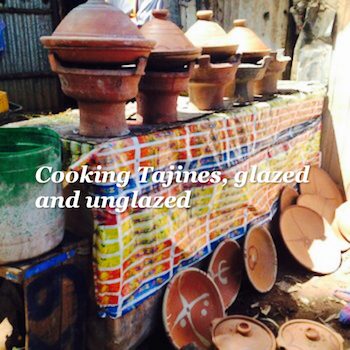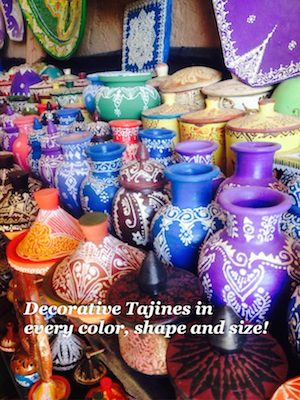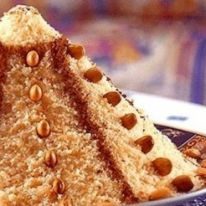
A souvenir at the top of your list when visiting Morocco is most likely an is an authentic Moroccan tajine. That is until you discover how many different options exist for purchase. It can quickly become overwhelming and frustrating. We recommend that you do a little bit of research ahead of time so the experience will be much smoother.
When you first begin to look have an idea in mind of the size tajine you would like. Typically, they are categorized by the number of people they will serve. A small tajine in Morocco is used to serve 1-2 people, a medium for 3-4 and a large for 6+ people.

Cooking Tajines
There are two types of cooking tajines; glazed and unglazed. You will be able to tell a tajine is for cooking in because it will not be painted. It may have decorative etching into the clay but that is the only decoration. A glazed tajine has a shiny appearance and unglazed looks like a natural clay material. Different cooks like different types of finishes. Either type may or may not have a small hole at the top of the cone. You shouldn’t worry if you see it – or if you don’t, it’s just a different style.
A glazed tajine is good for the cook who might worry about burning food inside. They clean easier and are more forgiving. Unglazed tajines take a little longer to “break in” and food burns quicker if it gets too hot. Many professional cooks swear by unglazed clay. They also develop a flavor with time.

Decorative Tajines
The other type of tajine you will see in the Moroccan souks are highly decorated with paint. These tajines are not made to or meant to be cooked in. Food is cooked separately and then transferred to the decorative tajine. You should always ask when you’re looking at a tajine if it can or cannot be cooked in just to make sure.
Caring for a Tajine
Once you’ve chosen your tajine and taken it home it’s time to get it ready. Unglazed tajines need the most preparation. They should be first rubbed with olive oil and then submerged in water for at least 24 hours. Let the tajine dry completely (another 24 hours) before using. Gazed tajines can also be pre-soaked but it’s not always necessary – ask the vendor when purchasing what they would recommend as it can vary.
To cook with a tajine always use low heat on a stovetop. You can cook on an electric or gas stove top or oven. If you’re using an electric oven you will need to put a diffuser between the tajine and the coils. They can be purchased online and from many shops in Morocco inexpensively. Be sure to check the water levels in your tajine so that it doesn’t get too low. A dry tajine will crack if there isn’t liquid and it gets too hot.
You should never wash your tajine (especially unglazed) with soap. The clay of the tajine is very porous and the soap will soak into the clay and can leave a funny taste. Instead, soak in hot water, and use a coarse scrub brush or steel wool to remove any food stuck to the surface.
There is a learning curve to using a tajine so don’t get discouraged if the first few times it doesn’t work out, but once you’ve mastered it you’ll be ready to make another trip to Morocco for more tajines to stock your kitchen!
For more information about How to Make a Tajine or A Taste of Morocco Food Tour
Amanda Mouttaki is a food and travel writer and blogger, with expertise on Moroccan culinary traditions and food culture. Her passion is uncovering the stories behind traditional cultures and food around the world. She lives in Marrakech, Morocco with her family.





